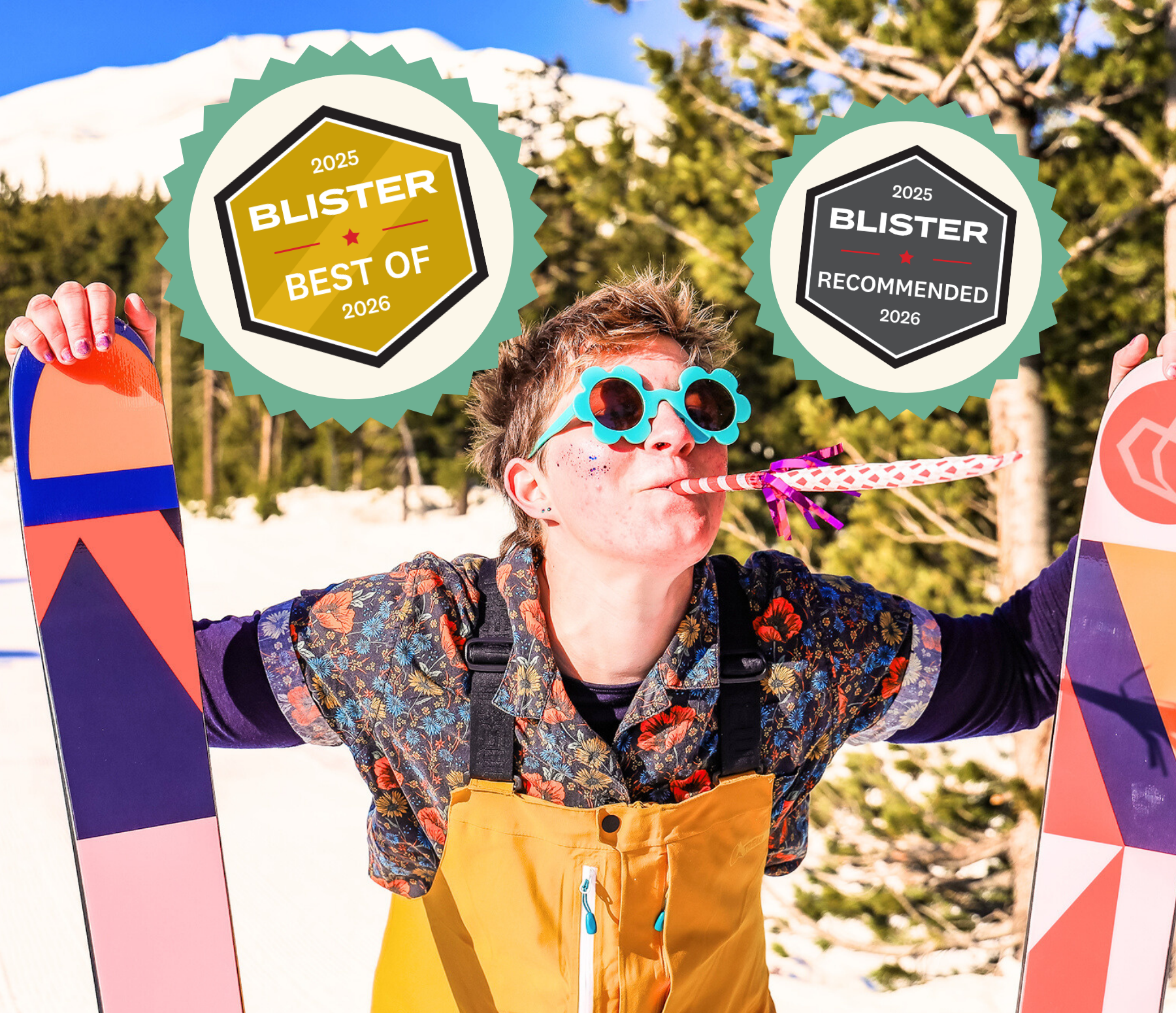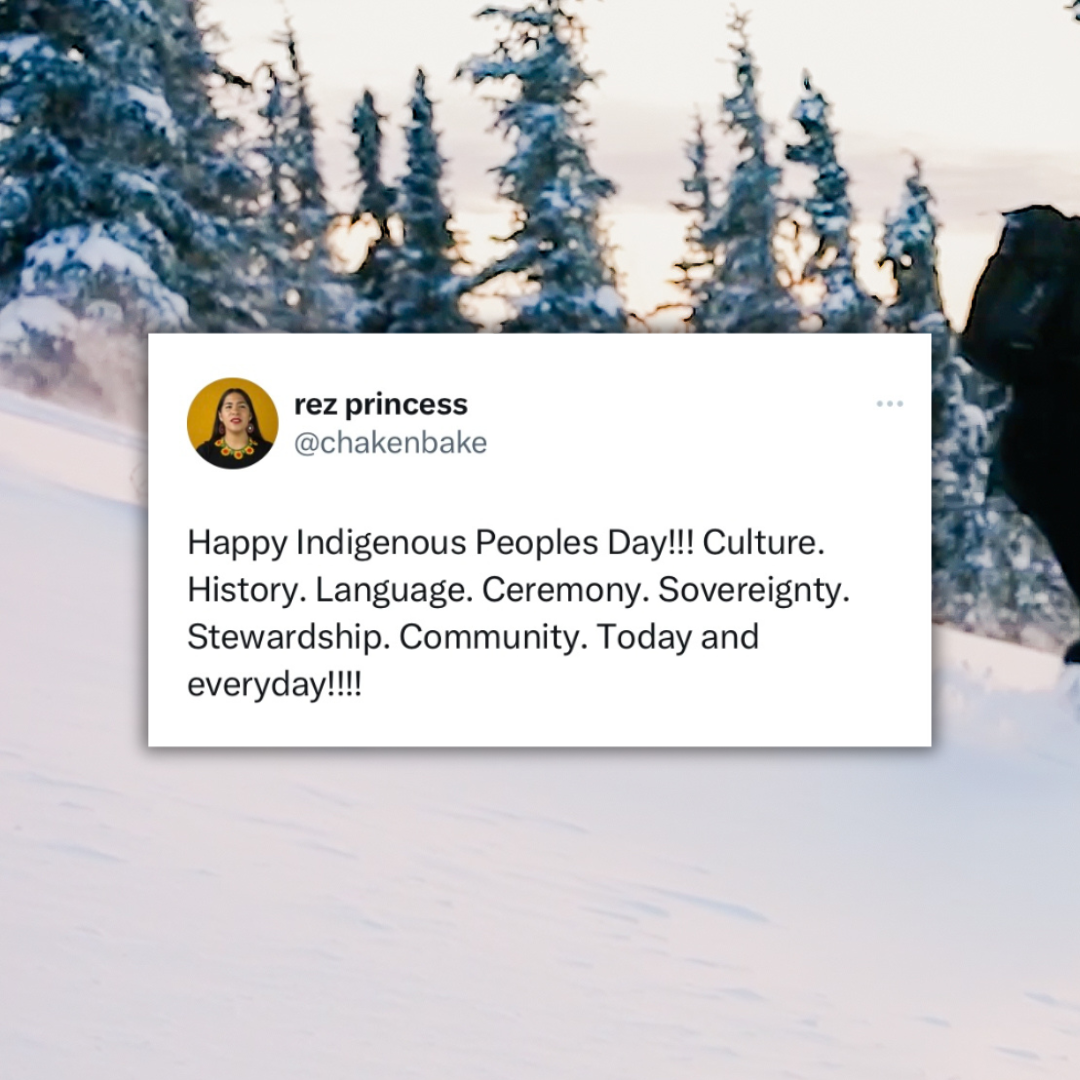Going out into the mountains means being confronted with the history of Indigenous peoples and their stolen lands. As a snowsport community, it is our responsibility to respect and understand the lands that we use to enjoy our sport. So, we've put together some conversation starters and resources, particularly about snowsport, to help you stay woke when you shred, and of course, continue to shred the patriarchy.
The white-washed version of snowsports is the only one we tend to hear within the industry. Generally speaking, when most think about going skiing, snowboarding, or snowshoeing, they often aren’t thinking about the indigenous lands these sports take place on. Stolen lands, that despite the colonization, slavery, epidemic, and genocide that have tried to take them away, still belong to indigenous people.
So, what can we as snowsports enthusiasts, do specifically?
Well, we talk about snowsports all the time anyway, right? So why not continue the conversation about the mountain with a change in perspective— by recognizing the reality of skiing and snowboarding on indigenous lands. To aid in the mission to de-colonize snowsports, we’ve put together some ideas for conversations all those who shred, should be having.
Topic 1: We don’t ski on [insert commercially named ski resort here] we ski on the stolen lands of…
In snowsport, we engage with indigenous lands and culture almost every day. Instead of saying “I snowboard at Sierra,” it’s time to say “I snowboard on the stolen lands of the Washoe people,” - see the difference? Many ski resorts around the world, from the US to Canada and Japan, are built on stolen indigenous lands with little recognition of the indigenous communities that the lands belong to. When resorts are built, it’s usually against the wishes of the local indigenous communities, so one of the first things we can do is simply just recognize this.
Resources here:
Vice - Some Ski Resorts Are Finally Starting to Reckon With Their Racist History
The Guardian - Top Canadian court rejects indigenous case against new ski resort
Deverite - Winter Park Resort acknowledges it operates on ancestral Indigenous land
Power Magazine: Why Canadian First Nation Skiers Stopped the Largest Resort Development in Years
Cap Radio (podcast) - It’s Not Just A Ski Resort. From Tahoe To Carson, Indigenous People Say Sierra Names Misrepresent Them
Topic 2: The Indigenous Origins of Snowsports
The origins of skiing and many of the snowsports we love, actually come from indigenous people, dating back 10,000 years ago. However, despite the Indigenous roots of snowsports, nowadays, there’s incredibly low involvement of indigenous people on the mountain. So the history and origin of snowsports is another conversation that needs to be had to fully appreciate our indigenous communities and our sport!
Resources here:
International Skiing History Association - Origin Story: Where Did Skiing Begin
Natives Outdoors - The Origins of Skiing are Indigenous and 10,000 years old
Maybey Ski - A Brief History Of Skiing - How Did We Get To Where We Are Today
Indian Country Today - Winter Workout: Enjoy Traditional Native SnowSport
Topic 3: Supporting and Uplifting Indigenous People in Snowsports
Who are the indigenous people on the mountain, and how do we support them? Though there are not many indigenous people currently involved in snowsports - in America, less than 3% of all riders - there are movements and projects uplifting and creating opportunities for the riders who exist. So, the rest of us should be amplifying, including, and supporting them. Whether that’s by donating; diversifying your Instagram feed; protesting; signing petitions; and/or educating yourself about indigenous people and culture, what’s clear is that we need to show our support.
Resources here:
A Native Owned creative collective making films and telling stories of Indigenous people on the mountain - Natives Outdoors
A media collective telling stories of what it means to be indigenous, specifically in the outdoors - On The Land Media
An organization that gives opportunities and empowers Indigenous Youth through outdoor sport - Spirit North
Without a full understanding and desire for discussion, our shredding can quickly become unethical. We’re not here to tell you how to recognize your privilege - just that you should. Hell, we are still trying to figure it out ourselves. However, what we can tell you is that as a snowsports community we have a responsibility to educate ourselves about indigenous people, culture, history, and how this all relates to the snow sports we all love.






